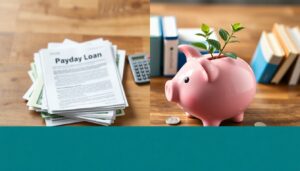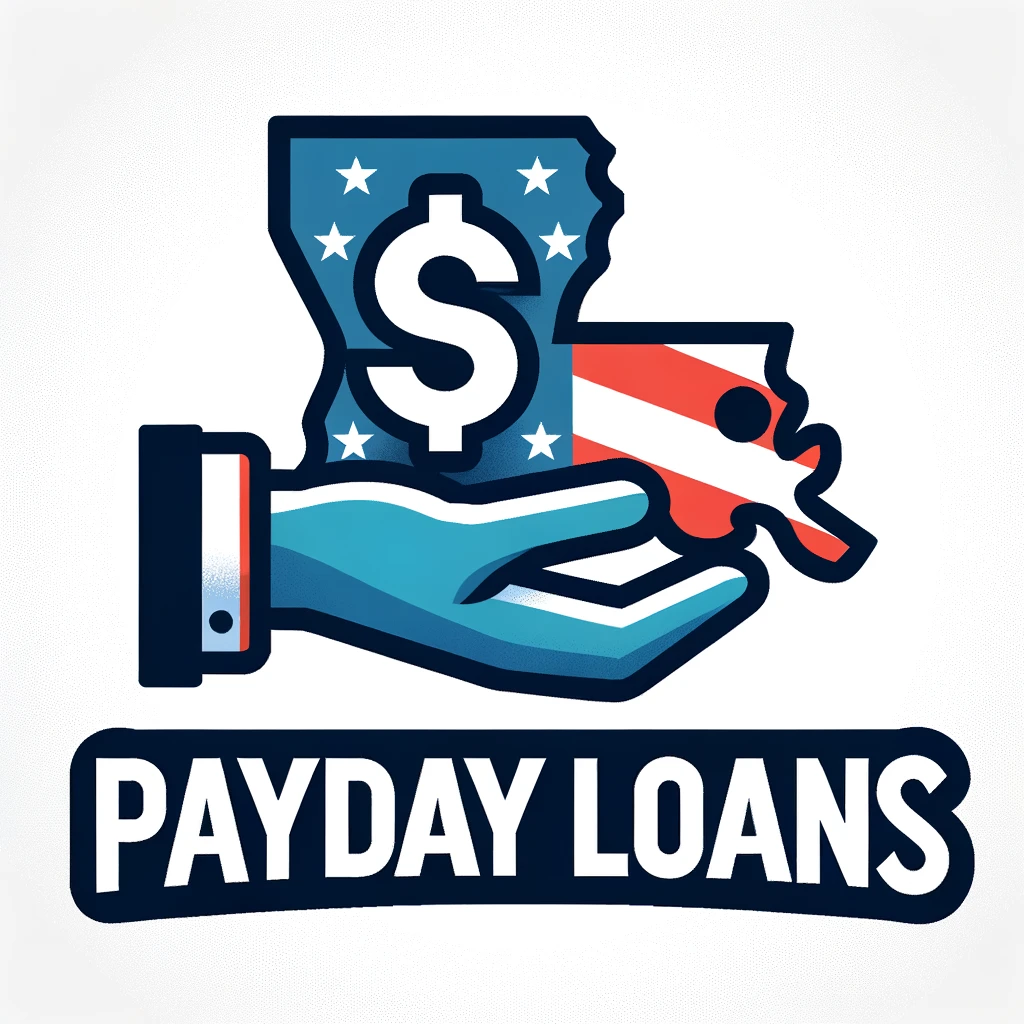Exploring the Realities of Payday Loans and Their Consequences
Payday loans may initially appear as an appealing option for individuals confronting urgent financial challenges, yet they frequently result in devastating consequences. Marketed as quick solutions for immediate cash needs, the truth is that these loans can entrap borrowers in a relentless cycle of debt that is incredibly hard to break free from. It is essential to grasp the implications and risks associated with payday loans to pursue more sustainable financial alternatives, such as establishing a solid savings plan, which can provide long-term relief without the looming threat of debt accumulation.
Defining Payday Loans: What You Need to Know
Payday loans are characterized as short-term, high-interest loans that are typically repayable on the borrower’s next payday. They are often promoted as a rapid fix for temporary cash shortages, offering access to funds with minimal credit checks. However, this accessibility can be misleading. The exorbitant interest rates tied to payday loans can thrust borrowers into a cycle of continuous borrowing that spirals out of control. For instance, a borrower might secure a $500 payday loan with an annual percentage rate (APR) soaring as high as 400%. By the time the repayment date arrives, the borrower may owe a significantly larger amount, often compelling them to take out another loan merely to settle the first one.
Such a practice can ensnare individuals in an unending debt cycle, making it nearly impossible to restore financial well-being. As borrowers grapple with mounting payments, their credit scores tend to plummet, further complicating their financial situations. This predicament is particularly perilous for those in lower-income brackets and communities with restricted access to conventional banking services, highlighting the need for informed financial decisions and alternatives.

Identifying the Risks Associated with Payday Loans
The hazards linked to payday loans extend far beyond the staggering interest rates. Numerous borrowers find themselves in precarious financial situations where the repayment terms are simply unmanageable. The average term for payday loans is a mere two weeks, often leading to extreme financial strain. When borrowers fail to repay the loan on time, they may incur additional fees and penalties, which can exacerbate their financial burden and lead to further borrowing.
Moreover, the repercussions of payday loans on credit scores should not be underestimated. Missing payments or defaulting on a payday loan can leave a lasting mark on one’s credit history, making it challenging to secure future loans or credit cards. This scenario perpetuates a cycle of dependence on payday loans, as many individuals resort to these risky options when faced with urgent financial demands.
For countless borrowers, the emotional impact of dealing with payday loans can be overwhelming. The stress and anxiety stemming from financial instability can adversely affect personal relationships, job performance, and overall well-being. Recognizing these risks is vital for anyone determined to liberate themselves from the payday loan trap and enhance their financial health.
Exploring Viable Alternatives to Payday Loans
Fortunately, a plethora of alternatives to payday loans exists, offering the necessary financial support without the crippling interest rates. Personal loans from banks or credit unions often come with lower interest rates and more manageable repayment options. Many credit unions provide small-dollar loans specifically designed to assist members in avoiding predatory lending practices, thereby offering a safer pathway to financial relief.
Additionally, reaching out to friends and family can be a feasible option for those wishing to steer clear of payday loans. Although it may feel uncomfortable to seek assistance, borrowing from loved ones frequently comes with more flexible repayment options and zero interest, making it a more financially sound choice.
Other viable alternatives include creating a budget to better manage finances and exploring community assistance programs that can deliver short-term financial aid. Establishing a financial safety net through savings is one of the most effective strategies to ensure that emergencies do not compel individuals back into the cycle of payday loans. By considering these alternatives, borrowers can mitigate their financial risks and move towards a more secure future.
Establishing a Consistent Savings Habit for Financial Security
Cultivating a habitual approach to savings is crucial for anyone aiming to replace payday loans with a stable financial foundation. By prioritizing saving, individuals can sidestep the traps of high-interest loans while constructing a protective financial cushion for unexpected emergencies. Developing a savings routine necessitates commitment and strategic planning; however, the long-term benefits far exceed the initial efforts put forth.
Setting Attainable Savings Goals for Success
Establishing realistic savings goals marks the first step towards crafting a robust financial future. Many individuals err by setting their savings targets too high, ultimately leading to frustration and discouragement. Instead, commence by identifying smaller, achievable goals that can be reached within a short timeframe. For example, aim to save $50 each month initially. Once that target is met consistently, gradually increase the savings amount. This method fosters both confidence and momentum.
Breaking down larger financial objectives into smaller milestones is also beneficial. For instance, if your ultimate goal is to save $5,000 for a new car, set interim targets, such as saving $500 every two months. This strategy not only makes the larger goal feel more attainable but also instills a sense of accomplishment along the way.
In addition, visualizing your savings goals can significantly boost motivation. Consider utilizing a savings tracker or creating a visual chart that showcases your progress. Observing tangible evidence of your financial growth can inspire you to adhere to your savings plan and remain dedicated to your financial objectives.

Automating Your Savings for Consistency
One of the most effective strategies to ensure consistent saving is by automating your savings. Numerous banks and financial institutions offer automated transfer services that enable you to schedule regular transfers from your checking account to your savings account. This approach not only simplifies the saving process but also eliminates the temptation to spend the money before it can be saved.
Begin by determining how much you can comfortably save each month and establish an automatic transfer for that amount. Timing the transfer shortly after receiving your paycheck can further enhance your saving discipline. By treating savings as a fixed expense, you can prioritize your financial future right from your paychecks.
Moreover, automating your savings can expedite the achievement of specific goals. For instance, if you aspire to save for a vacation or a new appliance, set up a separate savings account dedicated to that purpose. Automate transfers to that account, and watch as your savings accumulate effortlessly each month.
In addition to automating transfers, consider utilizing budgeting apps that sync with your bank accounts. These apps can help monitor your spending habits and remind you to adhere to your savings goals, simplifying the overall management of your finances.
Eliminating Unnecessary Expenses to Free Up Cash
Identifying and minimizing unnecessary expenses is a vital step in liberating cash for savings. Many individuals overlook small daily expenditures that accumulate over time, ultimately hindering their ability to save effectively. Begin by meticulously tracking your spending for a month to uncover areas where you can scale back.
Start with discretionary spending categories, such as dining out, entertainment, or subscription services. For instance, consider preparing meals at home instead of frequently dining out. Not only will this save money, but it can also promote healthier eating habits.
Another effective strategy for cutting back on expenses is to reassess recurring bills. Look for opportunities to negotiate lower rates on services such as cable, internet, and insurance. Don’t hesitate to shop around for better deals; even switching providers can yield significant savings.
Additionally, implement the “30-day rule” for non-essential purchases. If you find yourself wanting to buy something that isn’t absolutely necessary, wait 30 days before making the final decision. This waiting period often leads to the realization that the item may not be essential, assisting you in saving more in the long run.
Establishing a savings habit revolves around cultivating a mindset that prioritizes financial security over immediate gratification. By setting realistic goals, automating savings, and cutting down on unnecessary expenses, you can lay the groundwork for a solid financial future and effectively replace payday loans with savings.
Establishing an Emergency Fund for Financial Resilience
An emergency fund represents one of the most critical elements of achieving financial stability. It serves as a financial cushion, safeguarding individuals from the need to rely on high-interest payday loans during unforeseen expenses. Understanding the significance of an emergency fund and the process of building one can substantially enhance your financial resilience.
The Critical Role of an Emergency Fund
The significance of maintaining an emergency fund cannot be overstated. Life’s unpredictability means that unexpected expenses can surface at any time—be it medical emergencies, vehicle repairs, or job loss. Without a financial safety net, individuals may resort to payday loans, which only compound their financial difficulties.
An emergency fund empowers you to confront these unexpected expenses directly without succumbing to high-interest debt. For example, if your vehicle breaks down suddenly, having funds set aside allows you to cover the repair costs without added stress. This peace of mind alleviates the anxiety that frequently accompanies financial instability.
Furthermore, an emergency fund acts as a buffer against life’s uncertainties, enabling you to navigate challenges confidently. It empowers you to make decisions in alignment with your well-being rather than being forced into desperate situations dictated by financial pressures.
Determining the Appropriate Amount for Your Emergency Fund
Establishing how much to save in an emergency fund can vary based on individual circumstances; however, a commonly recommended target is to save at least three to six months’ worth of living expenses. This ensures you have sufficient funds to cover essential costs like rent, utilities, groceries, and transportation in the event of a financial setback.
To calculate your target amount, commence by evaluating your monthly expenses. Create a detailed list that encompasses all your necessary living costs and multiply the total by three or six to arrive at your savings goal. Keep in mind that the more secure your employment or the more stable your income, the closer you may want to aim for the lower end of that range.
For individuals with fluctuating incomes or less job security, aiming for six months of expenses may prove to be a more prudent strategy. This buffer offers greater peace of mind, particularly during uncertain economic times or volatile job markets.
Choosing the Right Place for Your Emergency Fund
Selecting the appropriate location to maintain your emergency fund is critical to ensuring it remains accessible while also generating interest. A high-yield savings account is often the optimal choice. Unlike traditional savings accounts that may offer minimal interest, high-yield accounts deliver better returns, allowing your savings to grow over time.
Consider seeking out online banks or credit unions, which typically provide higher interest rates compared to conventional brick-and-mortar institutions. Be mindful of any fees associated with the account, as these can diminish your savings over time.
Another option to consider is a money market account, which can offer competitive interest rates along with check-writing privileges. This can be convenient if you need to access your funds quickly. However, be aware of any minimum balance requirements that may apply.
Regardless of where you choose to keep your emergency fund, the key is to ensure it is easily accessible and earns a reasonable return. By maximizing your emergency fund’s potential, you can further bolster your financial security and decrease the likelihood of turning to payday loans in times of need.
Step-by-Step Guide to Building Your Emergency Fund
Establishing an emergency fund requires planning and discipline, but the peace of mind it affords is invaluable. Begin by setting a clear savings goal based on your monthly expenses, as previously discussed. Break that goal down into manageable monthly contributions to ease the process.
Automate your savings by arranging monthly transfers to your emergency fund. This guarantees consistent contributions without requiring active thought. Even if you start with a small amount, the key is to cultivate the habit of saving regularly.
Moreover, contemplate methods to expedite the growth of your fund. For instance, you can direct any extra income—such as tax refunds, bonuses, or gifts—into your emergency fund. This can provide a significant boost and help you reach your goal more rapidly.
Finally, prioritize replenishing your emergency fund if you ever need to dip into it. Life’s uncertainties can arise unexpectedly, and it’s essential to remain prepared. Rebuilding your emergency fund can help ensure you maintain financial security and reduce your reliance on payday loans.
Utilizing Your Emergency Fund Wisely
Employing your emergency fund judiciously is vital to preserving its purpose and effectiveness. Reserve this fund strictly for genuine emergencies, such as medical expenses, vehicle repairs, or sudden job loss. It should not be tapped for planned expenses like vacations or significant purchases.
When you do need to utilize your emergency fund, make it a priority to replenish it as soon as possible. This may require cutting back on discretionary spending for a few months or redirecting any bonuses or extra income back into your savings.
By using your emergency fund wisely and replenishing it quickly, you can ensure that it remains a reliable resource. This practice not only safeguards your financial health but also provides assurance that you can address unexpected challenges without falling back into the payday loan trap.

The Importance of Budgeting and Financial Planning
Effective budgeting and financial planning are indispensable for anyone aiming to replace payday loans with savings. A well-structured budget provides clarity on spending habits and helps prioritize saving and debt repayment. By implementing sound financial planning strategies, individuals can cultivate a healthier financial future.
Steps to Create an Effective Budget
Creating a budget is the cornerstone of effective financial management. A budget allows you to monitor your income and expenses, ensuring you allocate sufficient funds for necessities, desires, and savings. Start by listing all income sources, including salaries, bonuses, and side gigs.
Next, categorize your monthly expenses into fixed and variable costs. Fixed expenses encompass rent or mortgage payments, utilities, and loan obligations, while variable expenses include groceries, entertainment, and discretionary spending. This categorization aids in pinpointing areas where you may need to cut back if necessary.
Once you have a comprehensive picture of your income and expenses, establish spending limits for each category. This will help you stay on track and prevent overspending. Regularly adjust your budget, especially following significant life changes, such as securing a new job or relocating to a different area. Consistently reviewing and modifying your budget ensures it aligns with your current financial situation and goals.
Leveraging Budgeting Tools for Financial Management
Utilizing budgeting tools can streamline the process of managing your finances. A variety of budgeting apps are available that can connect to your bank accounts and automatically categorize your transactions. This automation eliminates the tedious task of manual entry and provides a real-time overview of your financial situation.
Popular budgeting apps like Mint, YNAB (You Need A Budget), and EveryDollar feature user-friendly interfaces and helpful functionalities to track expenses, set savings goals, and analyze spending patterns. Many of these apps send notifications when you’re nearing your budget limits, helping you maintain accountability.
For those who prefer a more hands-on approach, spreadsheets are an excellent option. Google Sheets or Excel can be customized to meet your specific needs, allowing for greater flexibility and control. Numerous templates are readily available online to help you get started, which you can modify according to your preferences.
By leveraging budgeting tools, you can gain insights into your financial habits, identify areas for improvement, and work towards replacing payday loans with a more sustainable savings strategy.
Revising Your Budget Over Time for Continued Success
Your budget is a dynamic document that should evolve alongside your financial circumstances. Regularly reviewing and adjusting your budget is essential to accommodate fluctuations in income, expenses, and financial priorities.
Set aside time each month to evaluate your budget. Examine your spending trends and pinpoint areas where you may need to adjust your spending limits. For instance, if you consistently overspend in a particular category, consider whether you can reduce costs elsewhere to offset it.
It’s also essential to incorporate any changes in income, such as a raise or a new job. When your earnings increase, think about adjusting your budget to allocate extra funds toward savings or debt repayment. This proactive approach helps you stay ahead of your financial goals and adapt to changing circumstances.
Additionally, life events such as marriage, having children, or relocating can significantly influence your budget. Be prepared to make adjustments based on these changes to ensure your financial plan remains relevant to your current situation.
Diversifying Income Streams for Financial Stability
Increasing your income streams is a powerful method for replacing payday loans with a more secure financial foundation. By exploring additional sources of income, you can expedite your savings efforts and enhance your overall financial stability.
Discovering Lucrative Side Hustle Opportunities
Side hustles have surged in popularity in recent years, presenting a plethora of opportunities to supplement your income. Whether it involves freelance writing, graphic design, or tutoring, numerous side gigs cater to various skill sets and interests.
Begin by identifying your skills and interests. Reflect on what activities you enjoy in your spare time and how they might translate into supplementary income. Platforms like Upwork, Fiverr, and TaskRabbit can help connect you with freelance opportunities that align with your expertise.
Additionally, explore community-based options such as pet sitting, house cleaning, or lawn care. These activities can typically be scheduled according to your availability and require minimal investment to kickstart. By dedicating just a few hours each week to a side hustle, you can generate extra income that goes directly into your savings.
Investing in Your Skills and Education for Higher Earnings
Investing in your skills and education can lead to increased earning potential and broader job opportunities. Pursuing further education, certifications, or training can enhance your qualifications and make you a more attractive candidate in the job market.
Consider enrolling in online courses or attending workshops relevant to your field or a field you’re interested in transitioning into. Skills such as coding, digital marketing, and project management are currently in high demand and often command higher salaries.
Moreover, many employers offer professional development programs or tuition reimbursement for employees seeking to advance their education. Taking advantage of these resources can boost your qualifications without incurring significant costs.
By continually investing in yourself, you position yourself for career advancement and increased income, ultimately diminishing your reliance on payday loans and enhancing your financial well-being.
Monetizing Unused Items for Extra Cash
Decluttering your home can serve as a profitable way to generate extra cash for savings. Many people possess items they no longer need or use, such as clothing, electronics, or furniture. Selling these unused items not only helps create more space but also provides an opportunity to boost your savings.
Consider organizing a garage sale or utilizing online marketplaces like eBay, Facebook Marketplace, or Craigslist to reach a broader audience. When selling items online, ensure you take clear photos and write detailed descriptions to attract potential buyers effectively.
Another option is to sell items through consignment shops, especially for clothing and accessories. These shops allow you to earn money without the hassle of managing sales yourself, offering a convenient way to cash in on unused items.
By transforming unwanted items into cash, you can swiftly add to your emergency fund or savings, helping to build financial security without resorting to payday loans.
Renting Out Assets for Additional Income
Another effective strategy for increasing income is by renting out assets you already own. If you have a spare room, consider renting it out on platforms like Airbnb. This can significantly boost your income, particularly if you reside in a popular area for travelers.
If you own a vehicle, think about joining a car-sharing service like Turo or offering rides through companies like Uber or Lyft. This can turn your vehicle into a source of income, especially during peak hours or weekends when demand is high.
Additionally, if you possess tools, equipment, or recreational items that you seldom use, contemplate renting them out to others in your community. Platforms like Fat Llama allow you to lend out items and earn money when they’re not in use.
Leveraging your existing assets can provide an additional stream of income to enhance your savings, thereby improving your financial stability and reducing reliance on high-interest loans.
Engaging in the Gig Economy for Flexible Income
The gig economy presents a wealth of opportunities for individuals seeking to supplement their income. Whether it involves driving for a rideshare service, delivering food, or completing small tasks for others, there are countless options available to accommodate your schedule and lifestyle.
Participating in the gig economy offers flexibility, allowing you to choose when and how much you wish to work. This is particularly advantageous for individuals with other commitments, such as family or a full-time job.
Consider exploring various gig platforms to discover the right fit for you. Websites like DoorDash, Postmates, and TaskRabbit can connect you with opportunities to earn extra income while enabling you to work on your terms.
By actively engaging in the gig economy, you can generate additional income that contributes to your savings goals, ultimately assisting you in replacing payday loans with a more stable financial foundation.
Strategizing to Manage and Reduce Debt Effectively
Managing and reducing debt constitutes a crucial aspect of attaining financial security and replacing payday loans with savings. Gaining a thorough understanding of your debt, employing effective repayment strategies, and seeking professional assistance when necessary can help you regain control of your financial situation.
Comprehending Your Debt Landscape
The first step in effective debt management is to compile a comprehensive list of your outstanding debts. This encompasses credit cards, personal loans, student loans, and any other financial obligations you may have. For each debt, make note of the interest rate, minimum monthly payment, and total balance owed.
Understanding the full scope of your debt is essential for prioritization. Identify which debts carry the highest interest rates; credit card debts, in particular, can be especially costly due to their elevated rates. By focusing on these high-interest debts first, you can save money in the long run.
Furthermore, assess your overall debt-to-income ratio, which is a calculation of your total monthly debt payments in relation to your income. A high ratio can negatively impact your credit score and restrict your borrowing capacity. By closely monitoring your debt levels, you can make informed decisions about your financial future.
Implementing Effective Debt Repayment Strategies
Once you have a clear understanding of your debt, it’s time to choose a repayment strategy. Two popular methods for addressing debt are the snowball and avalanche methods.
The snowball method entails eliminating your smallest debts first. By quickly paying off smaller debts, you gain momentum and motivation to tackle larger debts. This psychological boost can be particularly beneficial for individuals who struggle with maintaining motivation.
Conversely, the avalanche method emphasizes paying off debts with the highest interest rates first. This approach can save you money over time, as it reduces the total amount paid in interest. Select the method that aligns best with your financial situation and personal preferences.
Additionally, consider making payments that exceed the minimum each month. Even small extra payments can lead to a significant reduction in overall debt and the time required to pay it off.
Negotiating with Creditors for Better Terms
If you find yourself struggling to manage your debt, don’t hesitate to reach out to your creditors. Many companies are open to negotiating lower interest rates or more manageable payment plans. Being proactive in addressing your financial situation demonstrates your commitment to repaying the debt.
When negotiating, come prepared with a clear understanding of your financial position. Share your circumstances and express your willingness to make payments. Many creditors would prefer to work with you to find a solution rather than risk you defaulting on the debt.
Additionally, inquire about hardship programs if you encounter significant financial difficulties. Many creditors offer such programs for customers facing temporary hardships, which can lead to reduced payments or extended payment terms.
Seeking Professional Assistance for Debt Management
If debt feels overwhelming, seeking professional assistance can be a beneficial step. Consulting with credit counselors or financial advisors can provide valuable insights and strategies for effectively managing and reducing debt.
Credit counselors can assist you in creating a personalized action plan to tackle your debts. They may also offer debt management programs that consolidate your payments and potentially lower your interest rates.
Additionally, consider exploring options for debt consolidation. This entails combining multiple debts into a single loan with a lower interest rate. While this can simplify payments and reduce interest costs, it’s essential to grasp the terms and conditions of any consolidation loan.
By seeking guidance from professionals, you can acquire the knowledge and tools necessary to manage your debts effectively and work towards a more secure financial future.
Valuing Financial Education and Support Systems
Financial education plays a pivotal role in achieving financial stability and transitioning from payday loans to savings. Understanding personal finance concepts and seeking available support resources can empower individuals to make informed decisions regarding their financial futures.
Accessing Financial Literacy Resources
A wealth of resources exists to enhance your financial literacy. Local libraries often host free workshops and provide access to educational materials covering topics such as budgeting, saving, and investing. Online platforms also abound with information on financial education, ranging from articles and webinars to interactive courses.
Consider exploring reputable websites like NerdWallet, Investopedia, and the National Endowment for Financial Education (NEFE) for comprehensive guides and tools that can bolster your financial literacy. These resources empower you to make informed decisions about your finances.
Moreover, many community organizations offer financial literacy programs designed to educate individuals on budget management, savings strategies, and debt reduction techniques. Participating in these programs can yield valuable insights and connect you with others who share similar financial aspirations.
Connecting with Support Groups and Community Programs
Joining support groups or community programs that emphasize financial education can be beneficial for those seeking guidance. These groups often provide a platform for sharing experiences, challenges, and strategies related to financial management.
Many credit unions and community banks conduct financial workshops and counseling sessions aimed at helping members make informed decisions about their finances. These programs typically cover topics such as building credit, managing debt, and creating savings plans.
Engaging with others on similar financial journeys can foster motivation and accountability. This sense of community encourages you to remain committed to your savings goals and ultimately transition from payday loans to more sustainable financial practices.
Additionally, online forums and social media groups dedicated to personal finance can also serve as valuable resources. Participating in discussions and learning from others’ experiences can deepen your understanding and assist you in navigating your financial challenges.
Building a Personal Finance Network for Success
Surrounding yourself with a network of individuals who prioritize financial wellness can significantly enhance your financial journey. Consider reaching out to friends, family, or colleagues who possess knowledge about personal finance.
Establishing relationships with financial advisors, credit counselors, or money coaches can also provide additional support and guidance. These professionals can offer personalized advice tailored to your situation and help you stay accountable to your financial objectives.
Networking within your community can open doors to workshops, seminars, or other educational events focused on personal finance. Attend local meetups or events where you can connect with like-minded individuals interested in improving their financial literacy.
By seeking financial education and building a supportive network, you can empower yourself to make informed financial decisions and ultimately transition from payday loans to sustainable savings.
Frequently Asked Questions About Payday Loans and Financial Strategies
What are payday loans?
Payday loans are short-term, high-interest loans typically due on the borrower’s next payday, often leading to a cycle of debt that is hard to escape.
Why are payday loans considered risky?
Payday loans carry exorbitant interest rates and fees that can entrap borrowers in a vicious cycle of debt, damaging their financial stability and credit scores.
What alternatives are available instead of payday loans?
Alternatives include personal loans from banks or credit unions, borrowing from friends and family, and exploring community assistance programs that may offer short-term assistance.
How can I effectively start saving money?
Begin by setting realistic savings goals, automating your savings process, and cutting unnecessary expenses to free up cash for your savings endeavors.
What exactly is an emergency fund?
An emergency fund is a dedicated savings account established for unexpected expenses, serving as a financial safety net and reducing dependence on payday loans during emergencies.
How much should I aim to save in my emergency fund?
A common recommendation is to save at least three to six months’ worth of living expenses to ensure coverage for unforeseen circumstances.
Where is the best place to keep my emergency fund?
Consider maintaining your emergency fund in a high-yield savings account or a money market account for easy access and better interest rates.
What budgeting tools can assist me in managing my finances?
Budgeting apps like Mint, YNAB (You Need A Budget), and EveryDollar can help you track your spending and effectively monitor your financial goals.
How can I increase my income streams?
Explore side hustles, freelance work, or renting out assets to create additional income streams that can assist in boosting your savings efforts.
What steps should I take if I feel overwhelmed by my debt?
Consider seeking professional help from credit counselors or financial advisors who can guide you in effectively managing and reducing your debt.

Emily K. Lawson is a certified credit advisor and personal finance writer with over 10 years of experience in the short-term lending industry. She is passionate about helping Americans navigate financial emergencies with practical advice and clear explanations. Based in New Orleans, Louisiana, Emily combines her industry insights with a people-first approach to educate readers on responsible borrowing, credit management, and financial wellness. At QuickLoanPro.com, she shares up-to-date content designed to empower smart money choices and reduce debt stress.





Your exploration of the realities surrounding payday loans is both timely and necessary. I find it particularly insightful how you highlight the initial appeal of these loans, juxtaposed with the crushing long-term consequences for many borrowers. As someone who has seen friends and family struggle with debt from payday loans, I can personally attest to the reality of falling into a vicious cycle that seems almost impossible to escape.